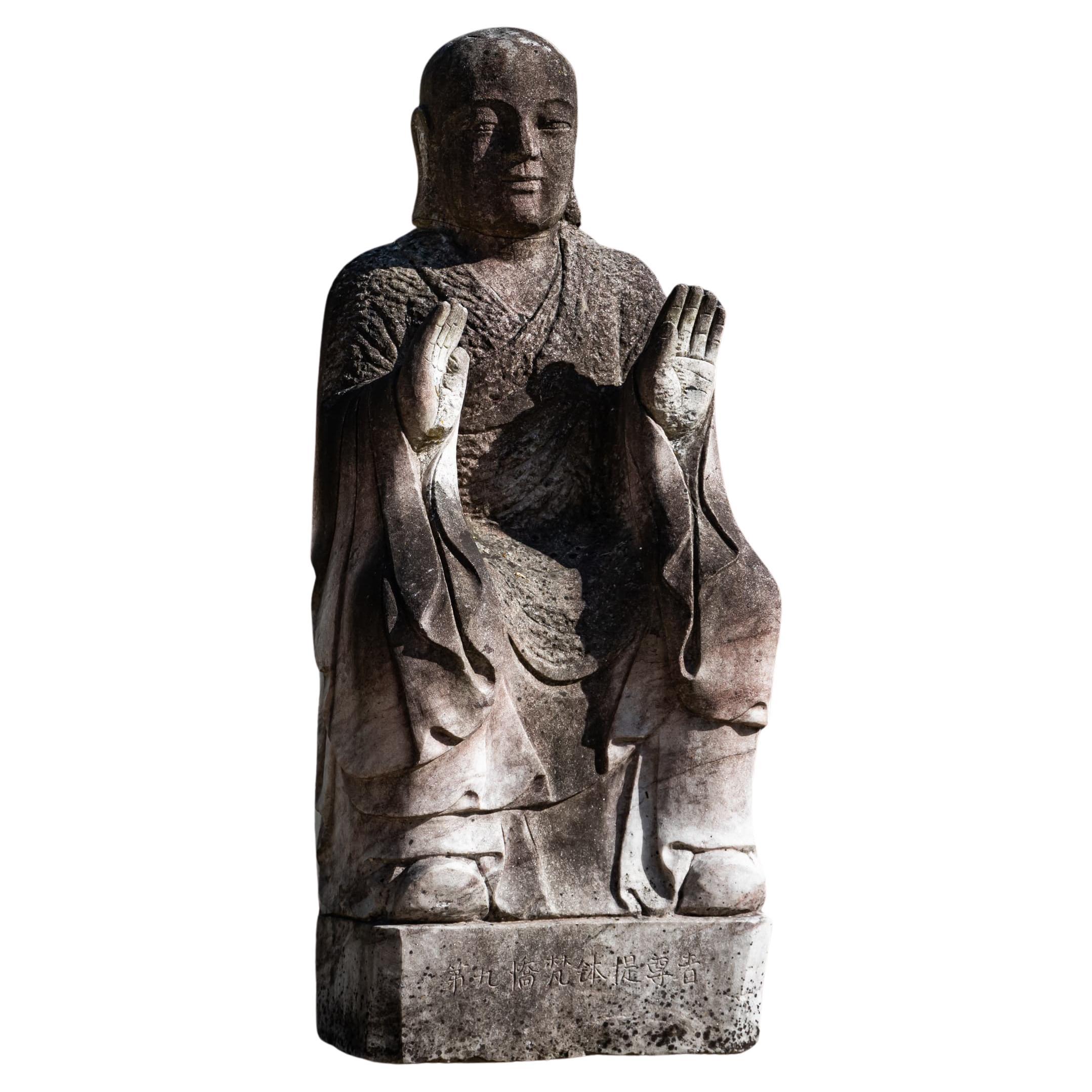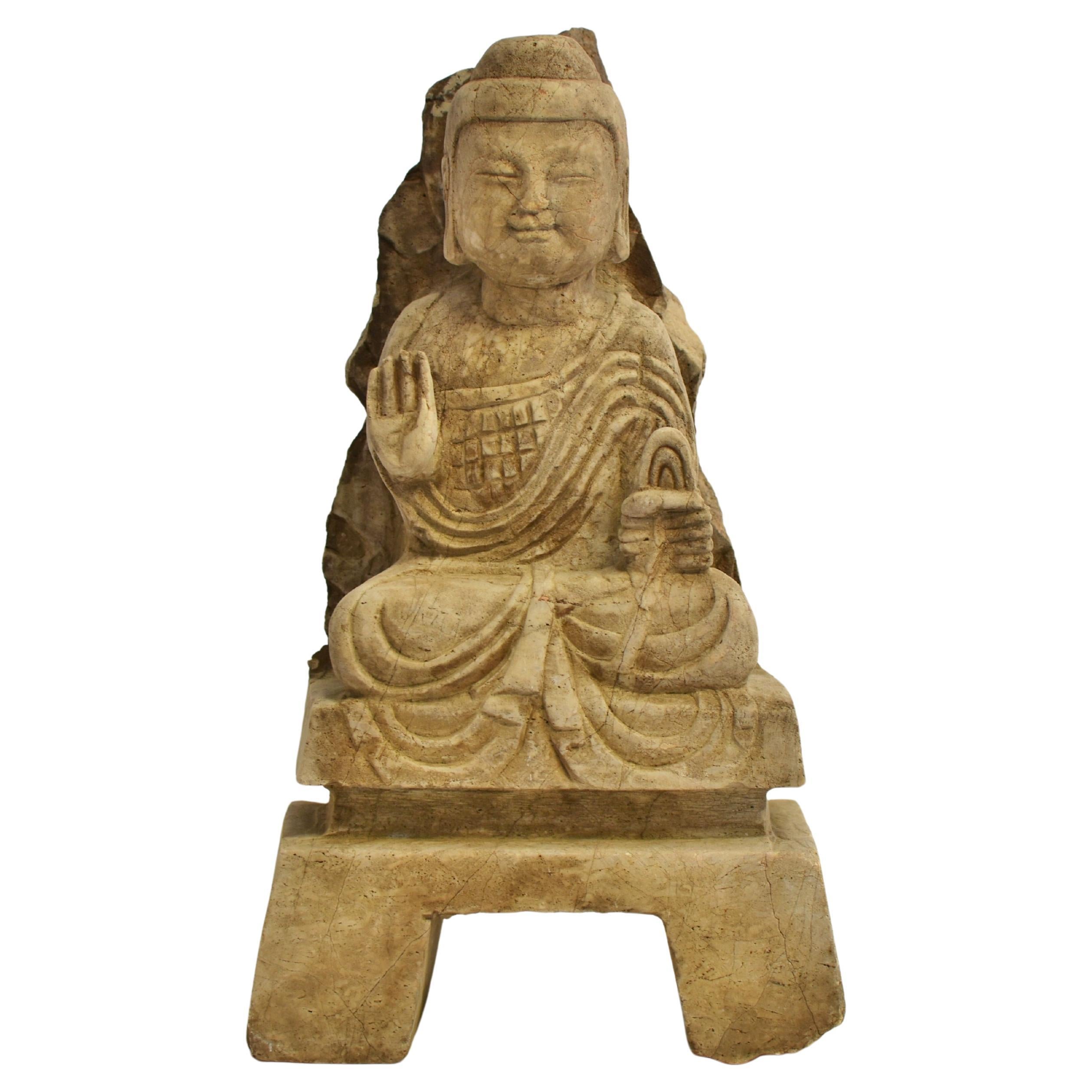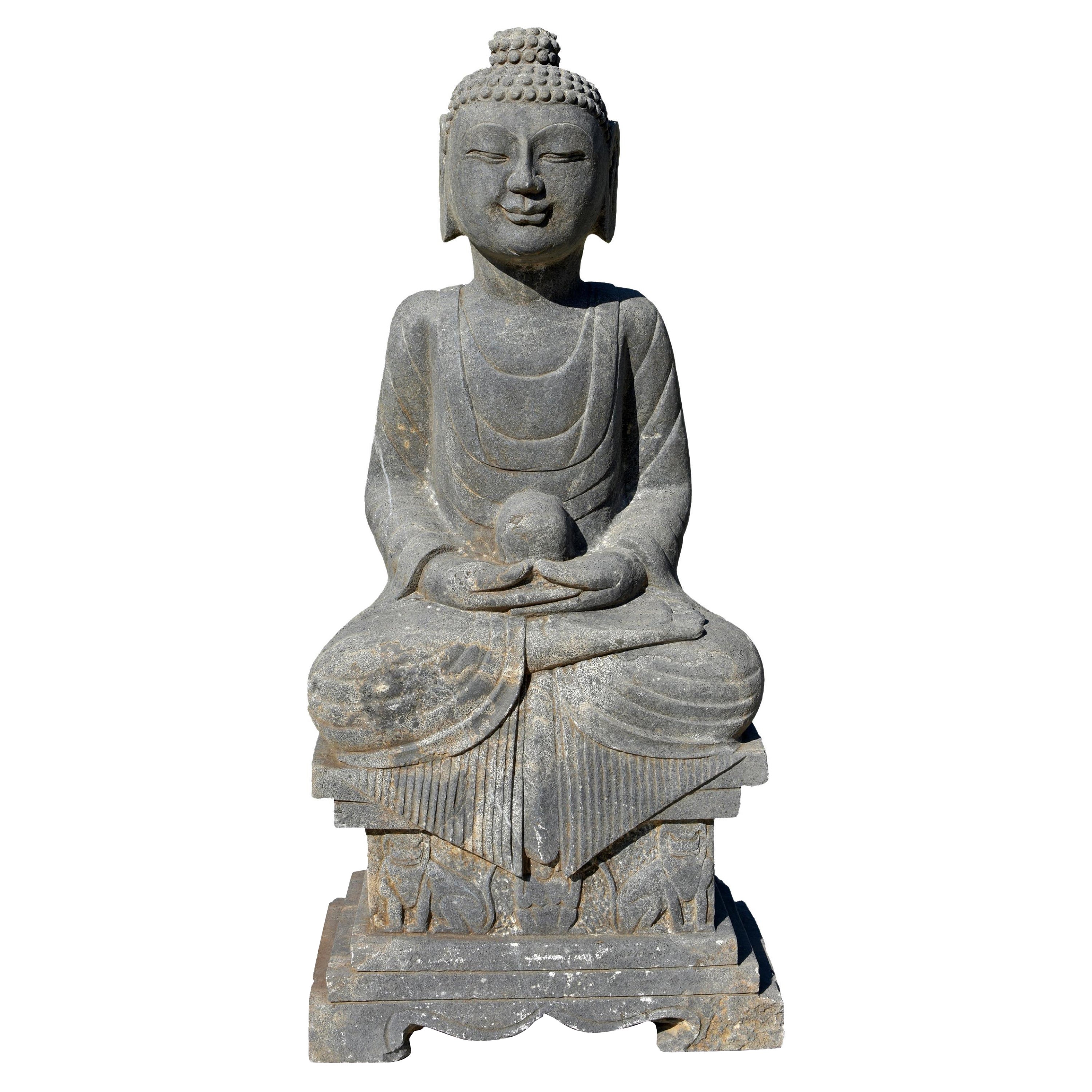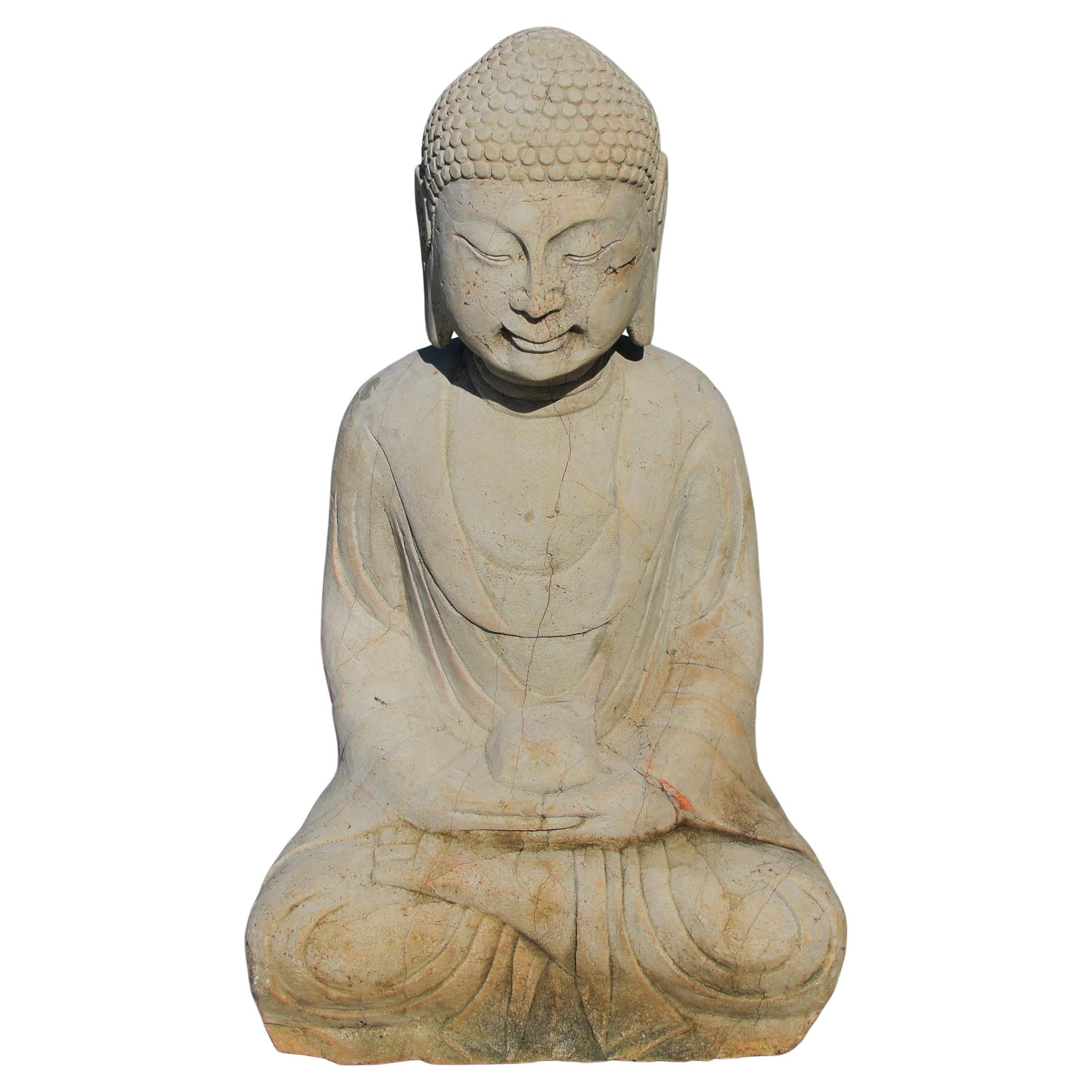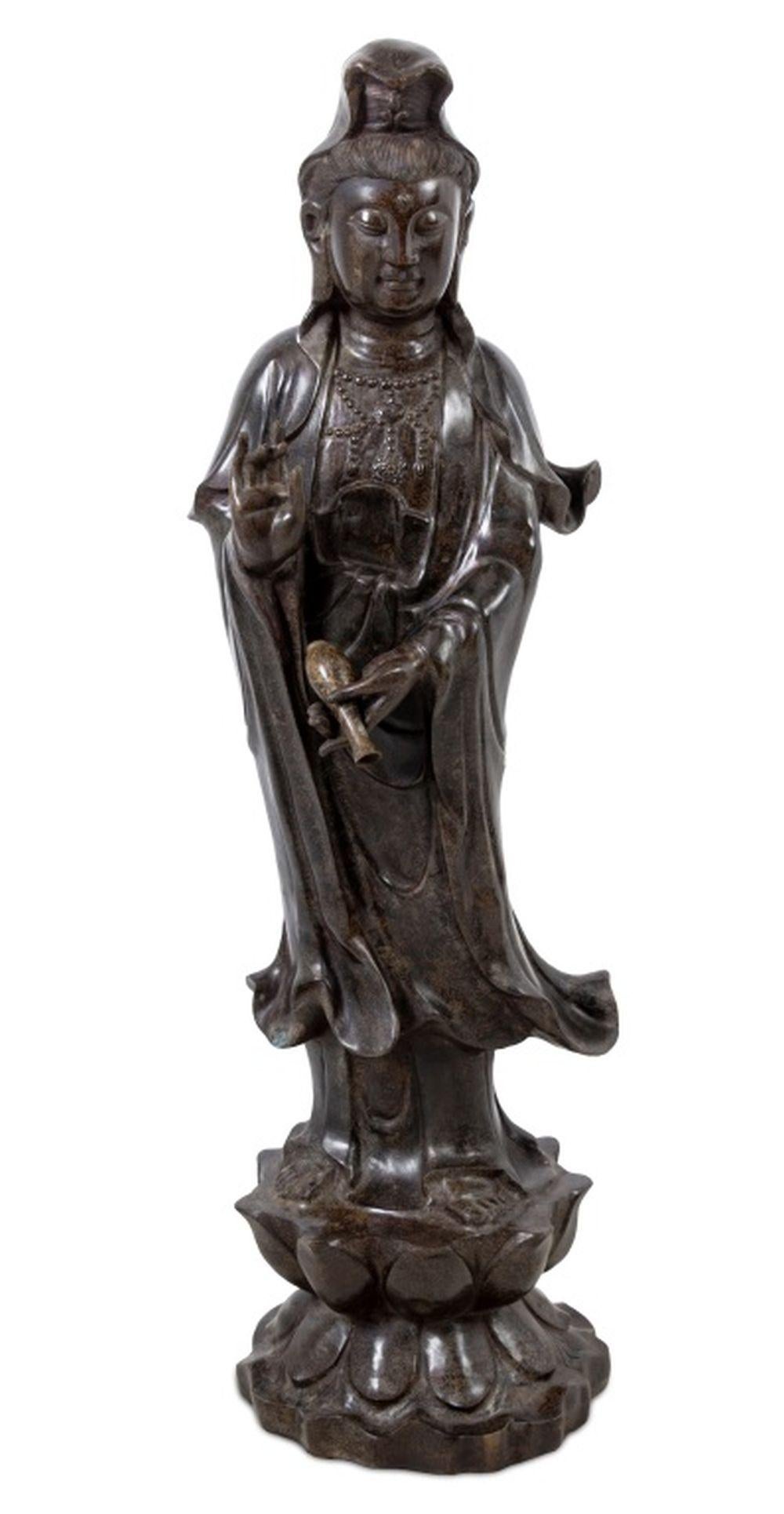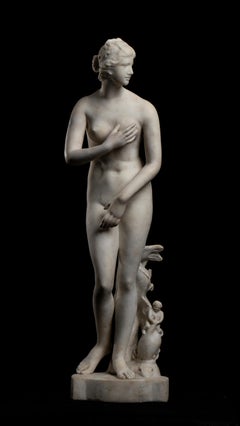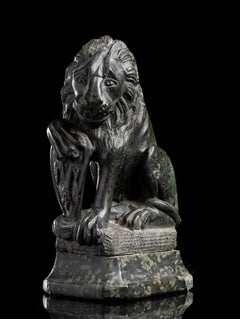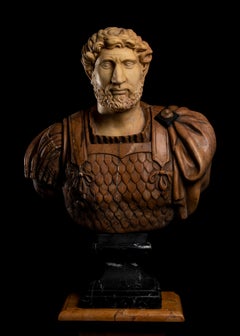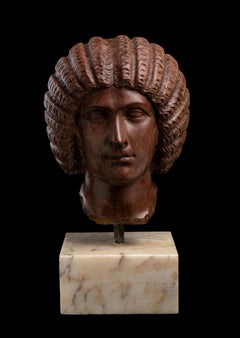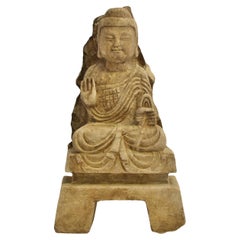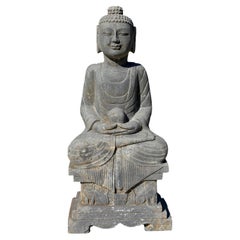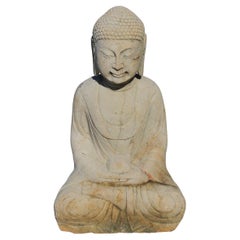Items Similar to Chinese Stone Sculpture of Bhudda in Tang And Wei Dynasties In Style Abhayamudrā
Want more images or videos?
Request additional images or videos from the seller
1 of 9
UnknownChinese Stone Sculpture of Bhudda in Tang And Wei Dynasties In Style Abhayamudrā20st Century
20st Century
$2,279.79
£1,740.12
€1,940
CA$3,213.42
A$3,528.95
CHF 1,842.89
MX$42,119.54
NOK 23,347.60
SEK 21,760.88
DKK 14,779.06
About the Item
An impressive stone sculpture of Buddha In the style of the Tang and Wei Dynasties hand carved. The figure of Bhudda, in mudra Abhayamudrā carved in standing position as a teacher with the two hands the the right hand oriented towards the sky and the left hand oriented towards the ground. The mudra represents a gesture that induces reassurance and salvation, as the open hand in front symbolizes distancing and detachment from fear.
The figure standing and was inserted in a carved lotus flower base; at this flower is the Indian Lotus, a sacred flower for Hinduism and Buddhism. It is also called Blue Lotus, Sacred Lily or Bean of India. It is the national flower of India and Vietnam. The lotus has a whole complex and ancient philosophical and religious symbolism, among which the best known is that of representing the subtle energy centers in the human body, called chakras. It is also considered a symbol of purity, and this is probably due to the so-called "lotus effect", which is the ability, observed precisely in lotus flowers, of a material to keep itself clean autonomously.
In the IX book of the Odyssey, the country of the Lotophagi, the lotus eaters, is mentioned.
- Creation Year:20st Century
- Dimensions:Height: 53.15 in (135 cm)Width: 15.75 in (40 cm)Depth: 9.85 in (25 cm)
- Medium:
- Period:
- Condition:
- Gallery Location:Roma, IT
- Reference Number:1stDibs: LU1350115617632
About the Seller
4.9
Vetted Professional Seller
Every seller passes strict standards for authenticity and reliability
Established in 1998
1stDibs seller since 2020
97 sales on 1stDibs
Typical response time: <1 hour
- ShippingRetrieving quote...Shipping from: Roma, Italy
- Return Policy
More From This Seller
View All19th White Marble Sculpture of Venus De Medici Grand Tour Style Italian
Located in Roma, IT
A white marble grand tour version of Venus de Medici carved by an Italian Sculptor artist in the 19th century in Italy, probably in Florence.
The Venus of Medici is a one of the mos...
Category
19th Century Figurative Sculptures
Materials
Marble
Sculpture of Lion "Marzocco" Green Marble Grand Tour Italian Florence 20th
Located in Roma, IT
Carved in the green marble know as verde prato, by a Florentine sculptor of the XX century this grand tour version of the Leone "Marzocco" is an exquisite example of elegance and her...
Category
20th Century Other Art Style Figurative Sculptures
Materials
Marble
Italian Polychrome Marble Sculpture Portrait Roman Emperor Hadrian Classical
Located in Roma, IT
An impressive and detailed marble bust sculpture of the Roman emperor Hadrian , carved in Polychrome specime marbles in a classical roman style in central Italy. Interesting is the s...
Category
21st Century and Contemporary Other Art Style Figurative Sculptures
Materials
Marble
Marble Sculpture Portrait Empress Julia Domna Rosso Antico Specimen Marble
Located in Roma, IT
Marble sculpture depicting a detailed portrait of the Roman Empress Julia Domna, sculpted by a master Roman sculptor in red marble and mounted on a square white marble base with a ce...
Category
21st Century and Contemporary Other Art Style Figurative Sculptures
Materials
Marble
$11,751 Sale Price
50% Off
Free Shipping
Italian Polychrome Pair Marble Sculptures Portraits Roman Emperors Classical
Located in Roma, IT
An impressive and detailed pair of marble busts sculptures of the Roman emperors Septimius Severus and Hadrian, carved in Polychrome specime marbles in a classical roman style in cen...
Category
21st Century and Contemporary Other Art Style Figurative Sculptures
Materials
Marble
Antonio Canova Ebe Aprés Ebe White Marble Sculpture 19th Century Italian
By Antonio Canova
Located in Roma, IT
An important grand tour Antonio Canova Ebe (Aprés), carved in white marble by an Italian sculptor artist in the 19th century from a block of white marble.
The work depicts the go...
Category
19th Century Other Art Style Figurative Sculptures
Materials
Marble
$28,791 Sale Price
30% Off
You May Also Like
Hand-Carved Sculpture of a Buddhist Monk, 21st Century
Located in Greding, DE
Sculpture of a Buddhist monk made of natural stone, masterfully hand-carved. The calm posture, finely folded robes, and engraved dedication give the figure a distinctive spiritual an...
Category
21st Century and Contemporary Chinese Chinese Export Figurative Sculptures
Materials
Stone
19th Century Antique Stone Buddha Young Shakyamuni
Located in Somis, CA
A 19th century antique stone Buddha, weighing 23 lbs, depicting a young Shakyamuni. His full, rounded face—typical of the Tang Dynasty style—bears downcast eyes beneath high-arched b...
Category
Antique 19th Century Sculptures and Carvings
Materials
Stone
$750 Sale Price
51% Off
Stone Buddha Amitabha Statue
Located in Somis, CA
A large, finely carved Tang style stone statue of Buddha Amitabha. Depicted with a full-cheeked face below neatly gathered hair and ushnisha, with large eyes, downcast smile and full...
Category
20th Century Chinese Tang Sculptures and Carvings
Materials
Stone
$5,500 Sale Price
35% Off
Antique Stone Amitabha Buddha Statue
Located in Somis, CA
A beautiful hand carved stone statue of Buddha Amitabha. Seated in dhyanasana, Buddha wears a robe elegantly draped over his body and gathered around his ankles. Finely depicted face...
Category
20th Century Chinese Tang Sculptures and Carvings
Materials
Stone
$5,250 Sale Price
30% Off
Chinese Guanyin Patinated Bronze Sculpture
Located in Astoria, NY
Chinese Standing Guanyin Patinated Bronze Sculpture, the bodhisattva donning floral pattern robes and holding an articulated vase, atop a double lotus base. 47" H x 14" W x 13" D.
Category
20th Century Qing Figurative Sculptures
Materials
Bronze
Monumental Chinese Buddha Statue
Located in Dallas, TX
Replica of a large stone Chinese Buddha from the 15th-16th century featuring weathered paint in various colors.
Category
21st Century and Contemporary Sculptures and Carvings
Materials
Stone
More Ways To Browse
Chinese Stone Art
Stone Sculpture Chinese
Blue Lotus
Indian Hand Carved Stone Sculpture
Carved Lotus Flower
Wei Dynasty
R C Gorman Pottery
Ramirez Manuel
Rene Coutelle
Rennert Inner Dialogue
Resin Gummy Bear
Ricardo Mesa
Richard Macdonald Orpheus
Richard Macdonald Red Dress
Richard Macdonald Trumpeter Draped
Richard Orpheo
Riho Kuld
Rodin Man With Broken Nose
